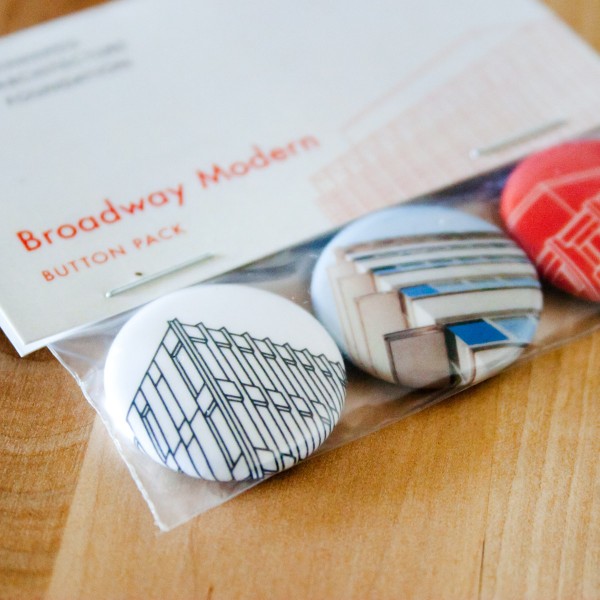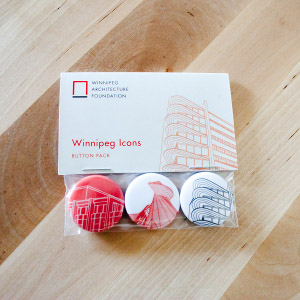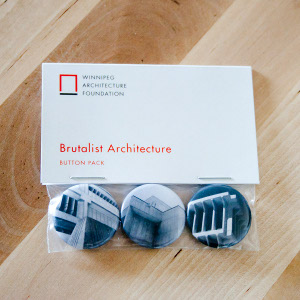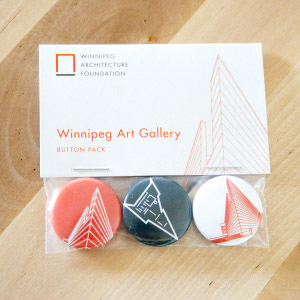Spacing has always used our merchandise as an important fundraising tool for the magazine — it helps to keep our ad content low, and editorial content high. Now we are teaming up with a number of independent Canadia designers to showcase and sell their work through our e-store. Over the next week we’ll be highlighting these new products as they become available to purchase online. If you or someone you know creates interesting urbanism- or Canadian city–themed products and would like to sell them through Spacing, email us at merchandise@spacing.ca
The Winnipeg Architecture Foundation (WAF) is a nonprofit, registered charitable organisation dedicated to advancing the awareness and appreciation of Winnipeg’s built environment through public education.
Spacing is proud to support WAF by carrying their unique Winnipeg architecture buttons. Each themed set includes three 1″ buttons similar to our own TTC subway and Montreal Metro buttons.
The Winnipeg Broadway Modernist set (pictured above) includes:
Monarch Life Building, 333 Broadway, 1960, Smith Carter Searle Associates
Britannia House, 338 Broadway, 1964, Waisman Ross Blankstein Coop Gillmore Hanna Associates
Investors Company, 280 Broadway, 1956, Moody and Moore Architects
The Winnipeg Icons set includes:
Precious Blood Church/Église du Précieux Sang, 200 Kenny Street,1968, Étienne Gaboury Architect
Monarch Life Building, 333 Broadway, 1960, Smith Carter Searle Associates
Winnipeg Clinic, 425 St. Mary Avenue, 1942, Frank Lount Architect
The Winnipeg Brutalism set includes:
Royal Manitoba Theatre Centre, 174 Market Avenue, 1969-1970, Waisman Ross Blankstein Coop Gillmor Hanna Architects
Manitoba Teacher’s Society Headquarters Building, 191 Harcourt Street, 1966, Libling Michener Architects
Public Safety Building, 151 Princess Street,1966, Libling Michener Architects
About the Winnipeg Art Gallery set:
Designed by architect Gustavo Da Rosa, with Number Ten Architectural Group, the Winnipeg Art Gallery (WAG) has been a striking visual symbol of the city since its opening in 1972. Clad with local Tyndall limestone on the exterior and interior, the WAG occupies a very prominent, triangular site in central Winnipeg.




